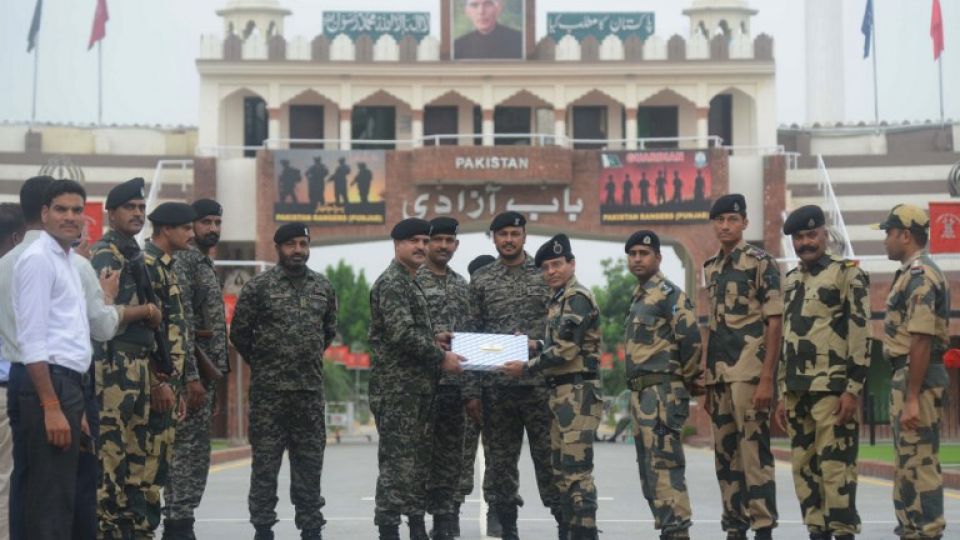August 29, 2019
Will Islamabad seize the opportunity.
CAN Pakistan convert the recent crisis in India-held Kashmir (IHK) into an opportunity to begin an entirely new phase on how the world perceives the dispute and how it views Pakistan? The answer must go beyond an obvious ‘yes’ to formulating and implementing a bold, vigorous communications strategy to supplement the diplomatic strategy being actively pursued.
The prime minister and foreign minister are leading an energetic official campaign. Their stress on violations of UN resolutions as well as their caution that India is likely to stage fake terrorist incidents to divert attention and justify retaliatory action is apt and timely. Yet, while such efforts are forceful and receive some coverage in the international press, the primary consumers of the government’s message are the already-converted people of Pakistan — whereas the more relevant, and contextually more important, audiences are the billions outside Pakistan, particularly the thousands among them who shape their respective countries’ perceptions and policies.
While our own independent news media is consumed by millions, the global reach of our English language electronic media is extremely limited. Nor do we use Spanish, French, Chinese, Russian and other languages in our external media proportionate to the scale of the challenge. In recent months, the launch of a local English-language news channel is a promising new effort.
In the past weeks, some major international media outlets and parts of social media have been highly critical of India’s repression. But the months-long Hong Kong protests are given far more prominence than the plight of seven million Kashmiris over the past 72 years — and particularly since 1989 — facing the bayonets of over 700,000 Indian troops.
A new communications strategy should have three goals: (i) to revitalise and continuously update the world’s awareness on the cruel oppression in IHK; (ii) to confront and overcome the real or imagined ‘Kashmir fatigue’ factor in overseas countries (images of persons blinded by pellet guns to pictures of the thousands disappeared offer a powerful, persuasive resource); and (iii) to gradually change Pakistan’s predominantly negative image in most parts of the world.
This image is a tragic reality created, in turn, by three elements: (i) our own ill-advised policies during the 1980s/1990s that made extremism and violence synonymous with the country’s name; (ii) our failure to project the fact that the overwhelming majority of Pakistanis are moderate, friendly and peaceable — confirmed by virtually every first-time overseas visitor; and (iii) India’s success in maligning Pakistan by using diplomacy, academia, news media, cinema, and individuals of Indian origin penetrating Western policy and opinion-making processes.
As important as the goals are the idiom, tone and language that should be used to implement a new strategy. The focus should be on the right of self-determination rather than the presumptuous slogan of “Kashmir will become Pakistan”. The element of fascistic Hindutva should remain the prime message rather than Muslim religious affinity. Presentation of hard facts from, say, the 2018 UN Human Rights Council report should be temperate and modulated, not emotive and strident.
A comprehensive, multi-dimensional, sustained multi-media campaign is required. A wide range of modes should be used: purchase of space and time in influential print and electronic media in each major country to project the message, canvas for frequent references in editorial and programming content, and social media used innovatively. Teams of former diplomats, analysts and parliamentarians with proficiency in English and other languages should visit major cities across the world to express the message in a lucid, temperate, rational way. Centres should be opened across these hubs to project the rich culture of Pakistan and the Sufi humanism of the Kashmiri ethos. Prominent international media outlets should be invited to visit Azad Jammu & Kashmir and the Pakistani side of the Line of Control — access unavailable on the Indian side.
The proposed initiative should be a public-private collaboration. The public part should be facilitative, not bureaucratic; the private dimension agile yet disciplined. For a government facing severe financial restraints, at least three potential funding sources can be tapped: Pakistan-based philanthropists and corporate entities; overseas Pakistani professionals and business owners; and similarly, sections of the Kashmiri diaspora.
Historically, Pakistan has never conducted a systematic, prolonged campaign to project its positive facets and its righteous support for Kashmiri rights. Past efforts have been only sporadic, limited, didactic and grossly under-funded. Every dollar invested will bring five-fold gains. Let 2019 signal the start of a new global narrative by Pakistan.



